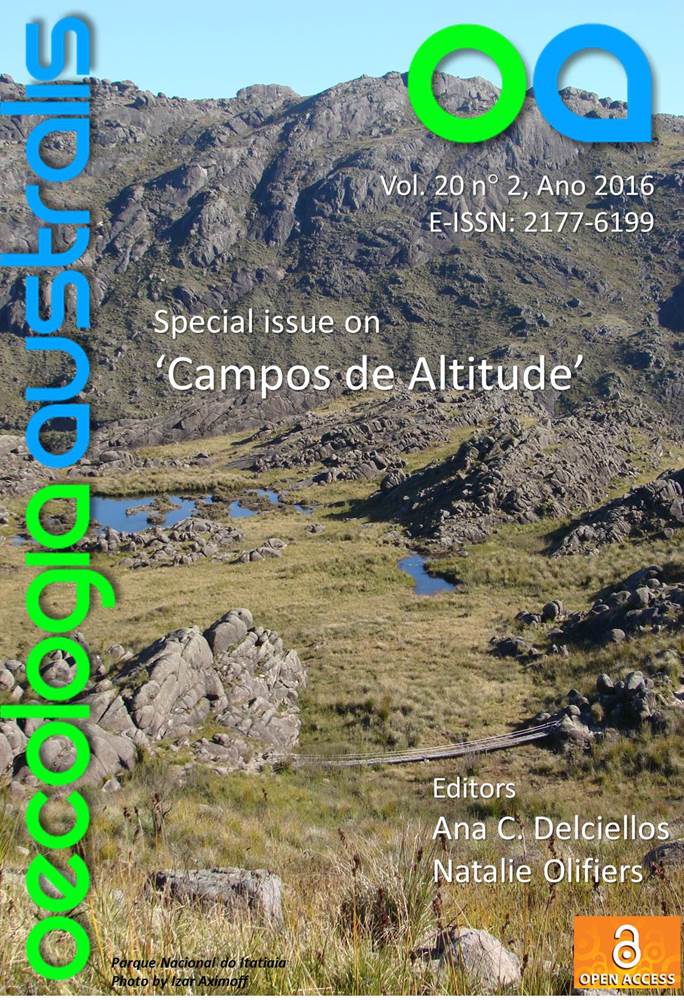ELEVATIONAL RANGES AND LOCAL EXTINCTION RISK OF BEETLES OCCURRING IN THE “CAMPOS DE ALTITUDE” IN SOUTHEASTERN BRAZIL
DOI:
https://doi.org/10.4257/oeco.2016.2002.09Keywords:
Atlantic Forest, climate change, Coleoptera, Extinction risk, Species richnessAbstract
The mountaintops of the Atlantic Rainforest in Southeastern Brazil are dominated by high altitude grasslands, named Campos de Altitude (CA). Considering the location and the smaller habitat areas of communities on the mountaintops and the high frequency of endemic species, the assemblages in these habitats are particularly threatened by climate change, and the vulnerability of a species should then be higher if its elevational range is narrow. In this study we aim to describe the elevational range of beetle species occurring in the CA and discuss their vulnerability to local extinction in the context of climate change, also considering their trophic group. We selected beetles in five taxa from three trophic groups in the CA of Serra dos Órgãos National Park (SONP) and Itatiaia National Park (INP): detritivores (Scarabaeidae - INP), herbivores (Chrysomelidae - SONP and INP, and Curculionidae - SONP) and predators (Coccinellidae - SONP, and Lampyridae - SONP). We found different elevational ranges among the studied taxa and among species within each taxon. Herbivores tended to have narrower ranges than the detritivores, and predators were the trophic group with the broadest species range. The relatively high frequency of species with narrow elevational range, particularly within the herbivores, suggests that this entomofauna is particularly endangered due to predicted climate warming and an expected range shift upwards. Considering that many endemic species are expected in the CA and that many undescribed species of insects have been found in this habitat, we may lose many yet unknown species.Downloads
Additional Files
- camiladebarros, Figure1.JPG (Português (Brasil))
- camiladebarros, Figure2.jpg (Português (Brasil))
- camiladebarros, Figure3.JPG (Português (Brasil))
- camiladebarros, Figure4.JPG (Português (Brasil))
- camiladebarros, Figure5.JPG (Português (Brasil))
- Elevational ranges of bettles occurring in the campos de altitude in southeastern Brazil (Português (Brasil))
- camiladebarros, 1026-7014-8-ED.doc (Português (Brasil))
Published
2017-02-23
Issue
Section
Articles


